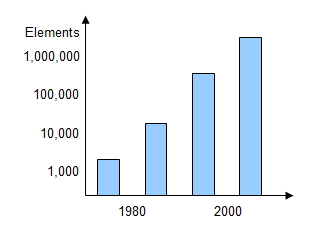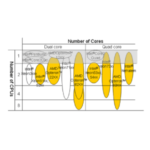A Powerful Simulation Engine

This technical report introduces the scope of JMAG’s technological development. For this first issue, we raise the question of why a high-speed calculation engine is necessary and address the various ways a matrix solver has been integrated into JMAG.
CAE’s role has vastly changed in the last 10 years following the expansion of CAE. Three dimensional analysis is becoming more common which has lead to an increasing number of elements that need to be evaluated (see Fig. 1). For this reason, high speed capabilities of the calculation engine have become an essential part of the technology.
 Fig. 1. Increasing Number of Elements
Fig. 1. Increasing Number of Elements
Usability
As users around CAE have most likely noticed, JMAG provides a variety of functions. One example is the ability to use CAD models designed in CAD systems for analyses. A precise CAD geometry model created using a CAD system can be used easily via the functions to link JMAG to a CAD system. However, the number of elements required increases dramatically to accurately evaluate a model with complicated geometry.
This is why JMAG provides an automatic mesh generation function that allows users with little to no experience generating mesh the ability to generate mesh appropriate for an analysis. A high quality mesh can be generated based on the model’s geometry and internal design, such as the gap. However, because generating only the minimum number of elements necessary with the auto mesh function is difficult, an experienced user that can control how the mesh is generated manually is advantageous.
Calculating a Variety of Parameters Efficiently
“I want to increase reliability of my designs by investigating a number of parameters.” Many designers desire the same ability. JMAG provides a parametric calculation function that allows users a method to automatically calculate a large number of design possibilities efficiently.
Analyzing Designs in Greater Detail
Invisible phenomena, such as magnetic flux density distribution, can be analyzed because JMAG is a computer aided engineering tool. Naturally, designers want to evaluate the physical phenomena inside their designs accurately. JMAG not only provides a wide range of modeling methods for geometry, but also simulates physical phenomena that include material properties, heat, and the structural makeup of a design.
Innovations to handle a large number of elements and calculation parameters as well as increasing the scale of the analyses are necessary to fulfill the diverse needs of our users. This is what drives us as we continue to develop a high-speed calculation engine.
[JMAG Newsletter November, 2009]



